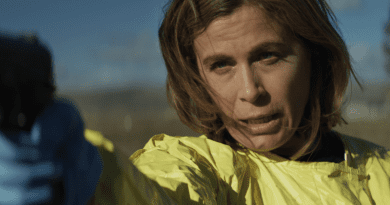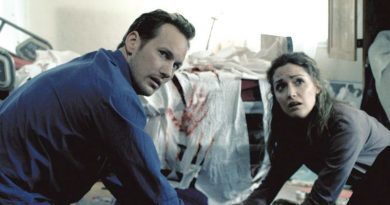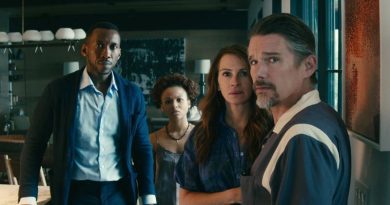Once Upon a Time in… Hollywood (2019) Review
With a title like Once Upon a Time in… Hollywood, most fans would expect Quentin Tarantino is going to have a field day deconstructing the Hollywood showbiz of the 1960s into his own personal brand of self-indulgent Hollywood fantasy, complete with bound-to-be quotable dialogues and loads of pop-culture references. His new movie also happens to takes place during the fateful month of August 1969 at the time of Charles Manson murders — the kind of famous true story that Tarantino would choose to alter its history just like the way he did in his revisionist takes of WWII and slavery-themed revenge fantasies of Inglourious Basterds (2009) and Django Unchained (2012).
But here’s the thing about Once Upon a Time in… Hollywood, it doesn’t really carry the same alternate-history narrative beats similar to his two aforementioned movies. That means this isn’t the same old Quentin Tarantino most of us (read: fans) have grown accustomed to. In fact, you could say his new film echoes something like Jackie Brown (1997) — more leisurely-paced with a distinctively laidback feel belonging to a subgenre where Tarantino coined the term called “hangout movie”. A hangout movie, of course, refers to a film that is usually long in duration where it spends more time on the characters in a series of uneventful stretches to the point you would get attached to them. And the actual plot doesn’t start to take shape until a certain period of time.
Whereas Jackie Brown still at least retains some of Tarantino’s signature narrative beats and snappy dialogues, Once Upon a Time in… Hollywood sees the director nearly embraced the concept of a hangout movie wholeheartedly. This time around, his brand of quotable dialogues are few and far between. Even the violence — often one of the hallmarks in a Tarantino’s film — is kept to a bare minimum. It’s like as if Tarantino has mellowed a lot since his last movie in The Hateful Eight four years ago. As a fan of Tarantino’s works myself, I personally find it tough to get used to in the first place upon watching his new film. It gave me a mixed feeling, sort of like a love-hate relationship where I applaud the way Tarantino being bold enough to offer us a refreshing change of pace but at the same time, can’t help myself feeling frustrated with the movie’s overall relaxed approach.
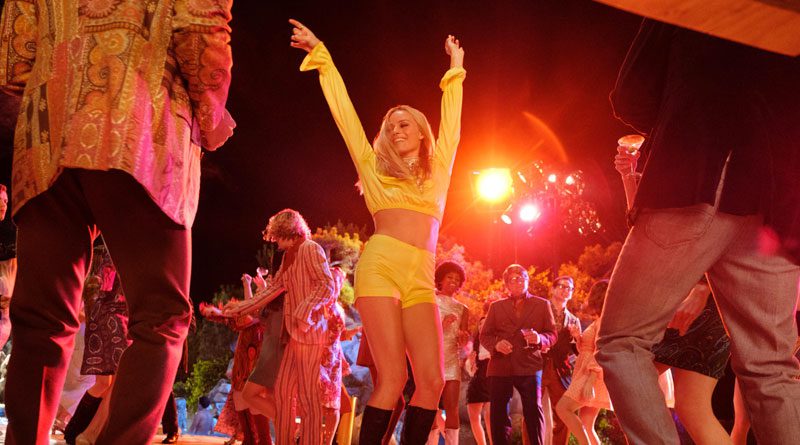
His story is wholly episodic and just to be clear, Once Upon a Time in… Hollywood is less about the exploits of Charles Manson murders and more of a bittersweet piece involving two (fictional) characters of a has-been TV western star Rick Dalton (Leonardo DiCaprio) and his longtime stunt double Cliff Booth (Brad Pitt), as they go through their professional life trying to stay relevant with the ever-changing Hollywood landscape in the ’60s era. Even Margot Robbie’s Sharon Tate character isn’t exactly what I would call a prominent role in this movie. She’s more of a background character who shows up in the movie every now and then, looking all glammed up with her luscious golden hair and ’60s retro-chic wardrobe. From the appearance alone, Robbie certainly looks stunning enough but it’s kind of a pity that Tarantino doesn’t know what to do with her character. It was frankly a missed opportunity where Robbie deserves better than relegating to just parading around with her beauty.
As usual with Tarantino’s movies, Once Upon a Time in… Hollywood is packed with a star-studded cast. Whereas Margot Robbie’s Sharon Tate and others like Al Pacino’s Hollywood agent role as Marvin Schwarz are sadly perfunctory, Tarantino at least didn’t botch the buddy-movie chemistry between Leonardo DiCaprio’s Rick Dalton and Brad Pitt’s Cliff Booth (both of them previously appeared separately in Tarantino’s Django Unchained and Inglourious Basterds). Ironically, it’s hard to believe that this is actually the first time DiCaprio and Pitt team up together as co-stars. Watching them sharing the same screen is like a dream come true for most fans of either of the stars and even for general moviegoers.
Kudos also go to Tarantino for fully invested into DiCaprio and Pitt’s characters respectively, as he gives them ample rooms for them to shine with their roles. Suffice to say, there are plenty of memorable moments between them, namely an extended scene where Dalton first gets acquainted with his younger co-star Trudi on the set of a (real) TV show Lancer played by 10-year-old Julia Butters in her breakthrough feature-length performance.
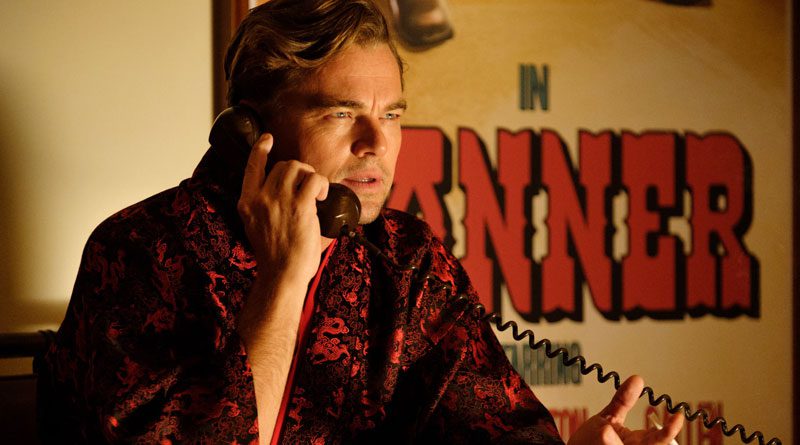
The same also goes to Cliff Booth in one of the scenes where he encounters Bruce Lee (Mike Moh) on a set but personally, I enjoyed Brad Pitt’s moment in an elaborate scene where he drives a young hippie hitchhiker Pussycat (Margaret Qualley) home to the Spahn Movie Ranch the most. It also happens to be one of the movie’s best scenes, where Tarantino expertly staged the whole scenario like it was a ticking timebomb waiting to explode at any time. The kind of Tarantino’s trademark anything-can-happen situation. Only this time, he does so in a subversive manner. Let’s just say it’s not what you would normally expect from a Tarantino’s movie.
Technically speaking, Tarantino does a splendid job recreating the 1960s era of Hollywood setting right down to its minute detail. And likewise, he never disappoints when comes to cherry-picking a fascinating list of yesteryear soundtrack such as Los Bravos’ “Bring a Little Lovin'” and Neil Diamond’s “Brother Love’s Traveling Salvation Show”. He even made good use of digital trickery, in which he seamlessly inserted Leonardo DiCaprio’s Rick Dalton in one of the scenes from John Sturges’ The Great Escape (1963).
While Once Upon a Time in… Hollywood is far from Tarantino’s best work — at least if to compare with the same league of Reservoir Dogs, Pulp Fiction and Inglourious Basterds — his latest movie remains an oddly fascinating, though uneven cinematic journey altogether. Here’s a friendly reminder, though: True Tarantino fans might want to stick around for the mid-credits scene.



